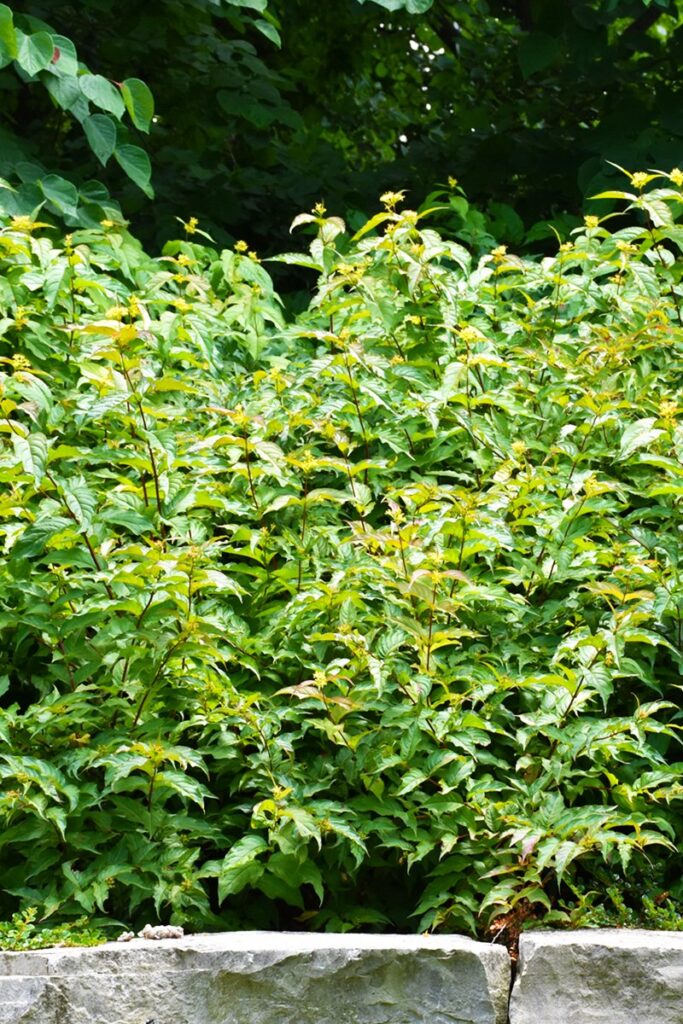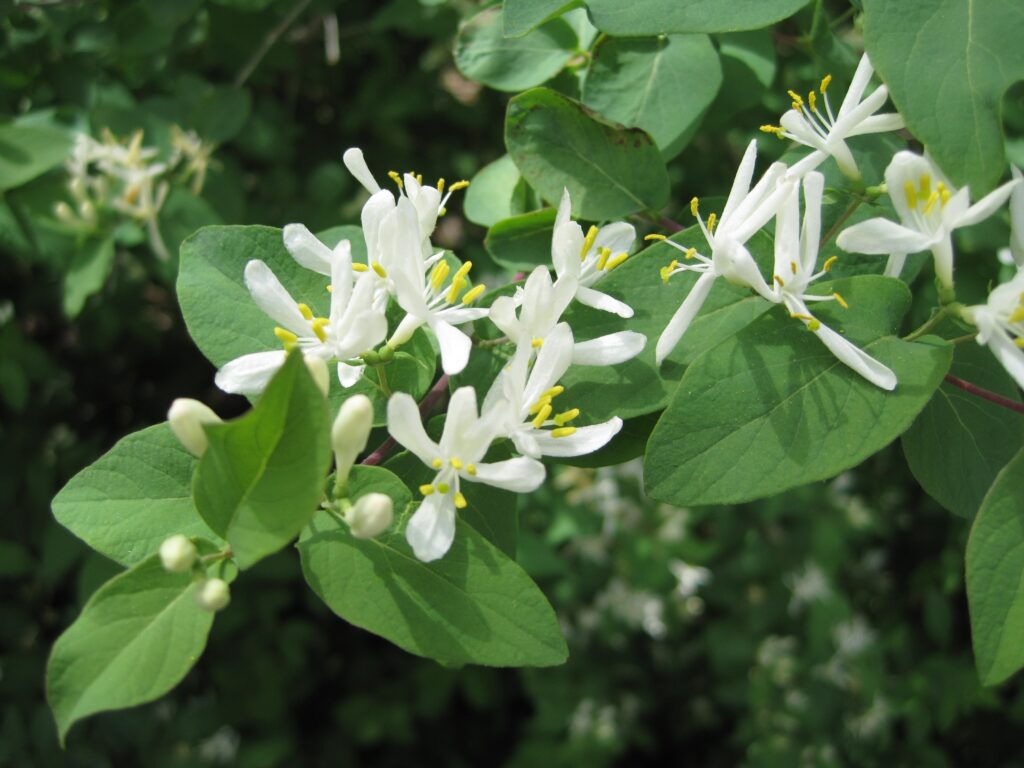Invasive Plants to Avoid: Bush Honeysuckle
Bush Honeysuckle (Lonicera maackii) is a deciduous shrub that can grow up to 15-20 feet high. This shrub can be found in abundance in Cherokee and Seneca Park, but also finds its way into any wooded areas or fence lines in nearly every Olmsted Park. It is an invasive species that threatens native plants and park ecosystems.
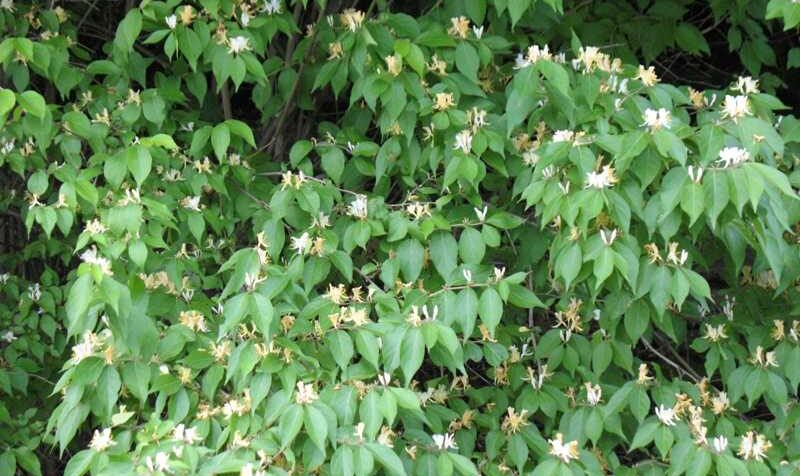
WHAT DOES IT LOOK LIKE?
The shrub has many stems growing at or around the ground, and can grow to be anywhere from 6 to 20 feet. The leaves are compound, oppositely arranged and entire, with a dark green topside and a pale-green, fuzzy underside. The plants’ stems and branches are usually hollow, unlike its native lookalikes. In the spring, the shrub has small, fragrant flowers that cluster at the leaf axil. They have a tubular shape and are lobed, typically reaching 1 inch in length. Small red berries appear in September in pairs on the axils of the leaves.
Bush Honeysuckle invades wooded areas and thickets, however it has adapted to grow under moderate light conditions and in a range of soils. Birds and small animals eat the berries and spread the seeds.
WHY is it bad?
Bush Honeysuckle spreads quickly and can grow in a wide variety of environments. Because it can grow in so many conditions so quickly, it outcompetes and displaces other surrounding native plants. Like all invasive plants, Bush Honeysuckle grows rapidly because it did not evolve here with the checks and balances of competition from the plants and animals that live here. Instead it takes the place of the plants that supply the resources our native wildlife needs.
How Did it Get here?
The plant is native to Asia, and was introduced to the U.S. in 1897 for ornamental plantings. As the plant began to escape and spread it was used for conservation efforts, which led to further expansion throughout the country. Despite its harmful effects on the native species and wildlife, some still use Bush Honeysuckle for ornamental purposes. You may stumble upon it being advertised for privacy hedges for your yard, though luckily it is considered a noxious weed in many states.
Native Alternatives
Spicebush
- (Lindera benzoin) is a deciduous, low maintenance shrub that grows best in sunny and partial shade conditions in moist soils.
- It is native to Kentucky with yellow-green flowers that bloom in March, and red berries that fruit in the fall, attracting birds and butterflies.
- Though the flowers and berries do not have a fragrance, the leaves and stems emit a scent often referred to as “spicy.”
- It grows up to 6 to 12 feet and is commonly used in landscaping to create edges and borders in a yard or garden.
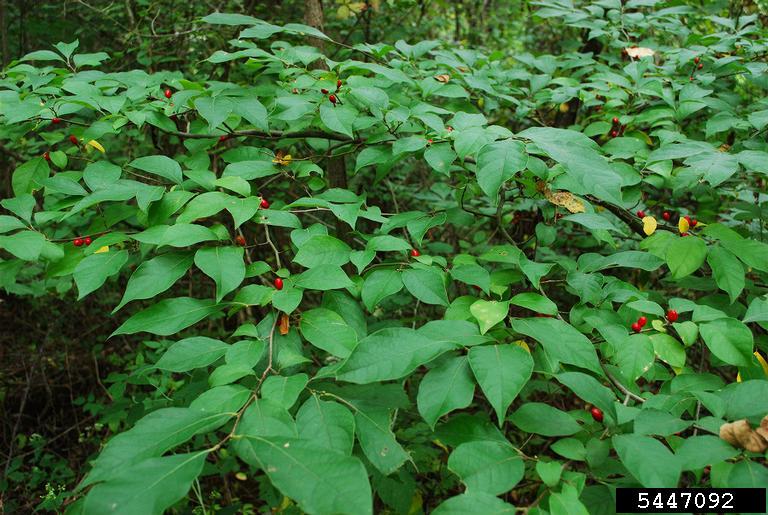
American Cranberrybush Viburnum
- (Viburnum trilobum) is a deciduous shrub that grows 8-12 inches high and prefers well drained soil with partial shade to full sun conditions. The leaves are lobed and resemble a maple leaf.
- In spring white, flat-topped flowers bloom, followed by bright red berries that some birds and wildlife eat in the fall. The leaves are a deep green until the fall, when they can turn yellow, red, orange, or burgundy.
- This shrub can come in altered forms, like dwarf forms. Insects such as aphids and other pests may be attracted to the shrub.
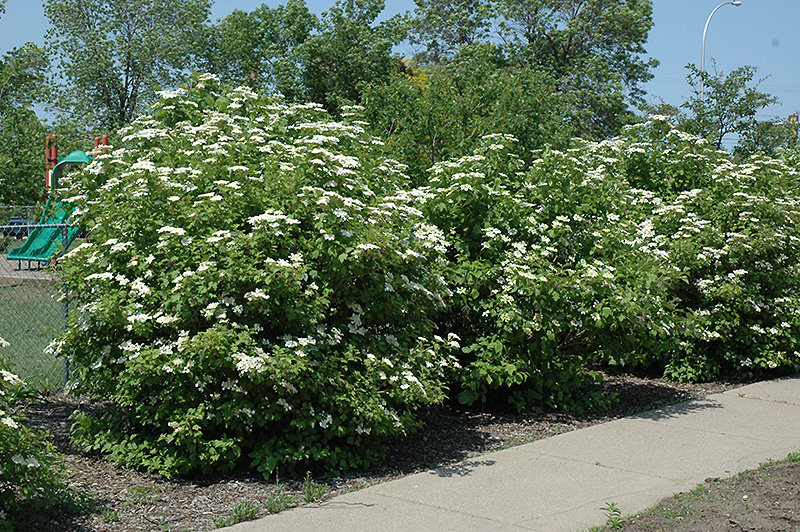
Silky Dogwood
- (Cornus amomum) is a deciduous shrub that can grow up to 12 feet. It can grow in full sun, partial sun, and full shade, and prefers wet soils.
- It has dark, ovate leaves and in June creamy white flowers bloom. In September, it has blue fruits which animals and birds like to eat.
- The shrub is often used to create hedges and borders, as a windbreak, and for soil stabilization.
- It has trouble in droughts, and can attract insect pests. If left alone it could spread to form a thicket, so it is good to cut it back when necessary.
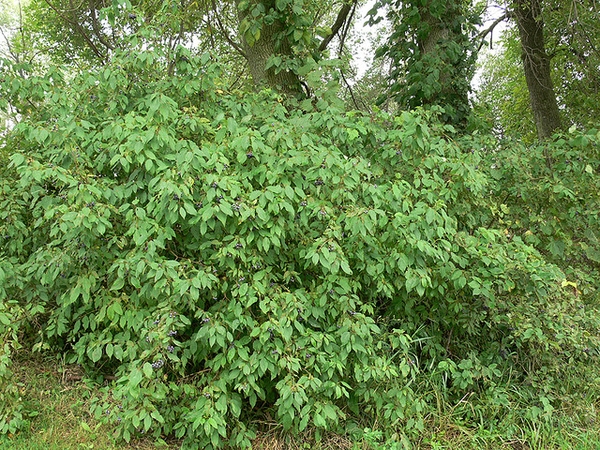
Our Commitment to Create Healthy Parks
Our Team for Healthy Parks crew work to keep the Olmsted Parks healthy by managing invasive species in our Olmsted Parks. Learn more about ecological restoration in this video:

